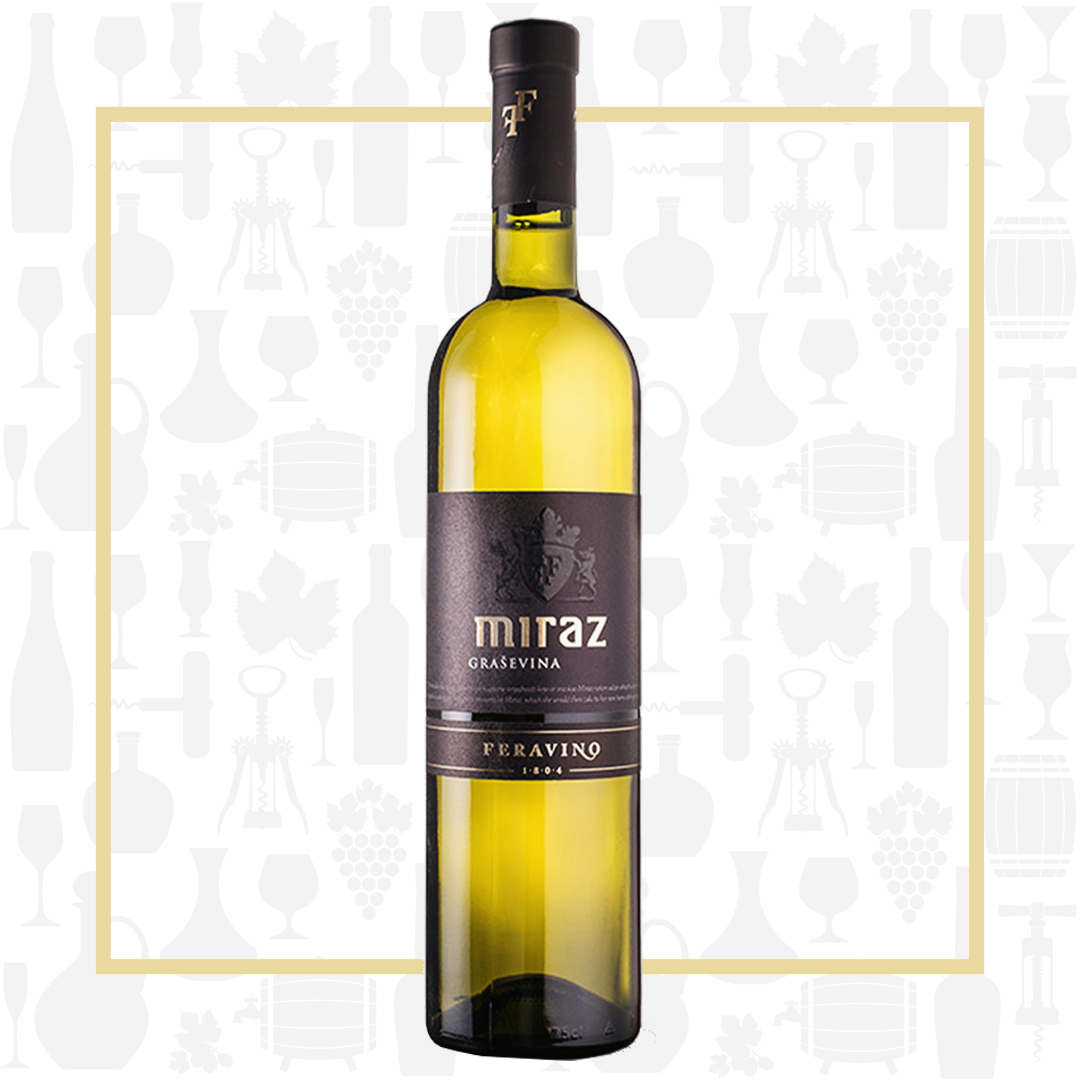Cellar Profile
Feravino was established in the 1700s but these vineyards have been farmed since the 1300s, when the region was put to vine by the Cistercians and Templars. The current cellar was built in 1804 and refurbished in 1996. The vineyards now span 150 hectares, split evenly between white and red grapes with the majority trained via the double Guyot method. The vineyards are uniquely surrounded by forests, a significant moderator for the area’s hot, dry summers. The winery focuses on indigenous Frankovka (Blaufränkisch) and Graševina, varieties that express the winery’s terroir and make full, flavourful and balanced wines. The grapes are all hand-harvested and intervention throughout the winemaking process is kept to a minimum. These wines have modern richness coupled with Old World sensibilities and charm. Part of the larger Osijek-Baranja County, Feričanci is one of Croatia’s smallest wine growing regions. It has a rich agricultural history, with grape-growing having played a prominent role throughout the centuries. The region’s Continental climate and cool soils provide the framework for flavourful, food-friendly wines made for every occasion.
Region
Feričanci municipality is located in the western part of Osijek- Baranja county. The Mur river marks the northern edge of the region until it flows into the Drava, the longest of the Danube's tributaries. The Slavonia (Slavonija) region of Croatia has a moderate , bordering on cool, Continental climate, with the Danube, Drava and Sava Rivers providing micro-climates needed for wine production. Loam and clay soils predominate, however the region is long known for crafting affordable, aromatic wines from its more fertile soils. Wineries here specialize in white wines and early ripening, lighter-bodied reds. Grasevina — commonly known as Welschriesling outside of Croatia — is by far the most widely-planted variety. You will also find Pinot Bijeli (Pinot Blanc) and Chardonnay in whites, and cool climate reds such as Blaufrankisch and Zweigelt. Autumn is generally warmer than the spring, and grapes enjoy long hang times to garner complexity prior to harvest. Modern winemakers have found site-specific areas to make internationally renowned, elegant wines, that focus on acidity and balance.
Vineyard
Feravino owns 160 hectares of vines in three locations: Feričanci, Zoljan and Ceremošnjak . All of these vineyards are located on the slopes of Krndija Mountain and divided into small micro-locations separated by woods and other natural barriers. Grapes for the Miraz wines are sourced primarily from the Feričanci vineyards, where old vines are rooted in loam and clay.
Winemaking
The fruit for this wine was left to hang a lot longer than the rest of the vineyard before being harvested manually. A portion of the grapes was dried to eliminate water content and another portion was de-stemmed and cool-macerated on its skins for half a day. The bulk of the grapes were pressed into stainless steel for a long, cool fermentation to avoid malolactic conversion. That wine was aged on its fine lees for three months to garner mouth-feel and complexity. The dried portion was pressed into stainless steel with stems on and without temperature-controlled fermentation to add complexity, before being aged for three months in Slavonian oak. The wines were blended and left in tank to mellow before being bottled unfiltered.
Tasting Notes
This has a wonderful golden-green hue, with surprisingly profound aromas for the varietal. There are biscuity, leesy notes, but the primary fruit is dominant; ripe pear, Spartan apple, gooseberry and quince. The palate is fairly lush, with definite weight. There is balancing acidity, but this is one of the fullest expressions of Graševina you will find. The primary fruit flavours are joined by saline minerality, bruised stone fruit notes and hints of dried apricot on the long finish. Chill and serve with pork sausages or roast chicken.
Varieties
Graševina, also known as Welschriesling, is the everyday wine of Central Europe and one of the most popular white grapes in Croatia; it is so common that it is widely considered to be indigenous. It is a dry, fresh, aromatic white with apple-like notes. Though more well known for being affordable and forgettable, some producers harvest Graševina later in the autumn, making bigger, bolder versions, as well as sweet dessert wines. When given extended lees contact, it can become quite rich and complex.

